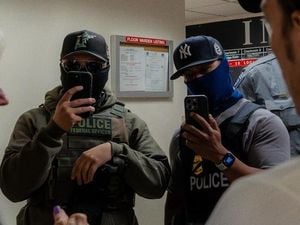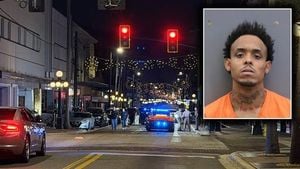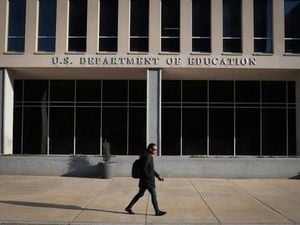When the lights dimmed at the José Miguel Agrelot Coliseum on July 11, 2025, and Bad Bunny took the stage, Puerto Rico’s capital pulsed with more than just music. It was the start of a summer residency that would become a cultural flashpoint, blending the rhythms of reggaeton with the island’s ongoing debate over its political future. But as the summer wore on, it became clear that this wasn’t just another concert series—it was a moment when art, identity, and politics collided on a global stage.
Bad Bunny, already a superstar, used his platform to amplify the symbols and sentiments of Puerto Rican nationalism. Throughout his performances, the island’s iconic La Borinqueña flag waved above the crowd, and social media posts from the artist hinted at solidarity with the independence movement. According to the New York Sun, “Bad Bunny is a cultural juggernaut, amplifying the independence movement by giving it a global stage.” For many fans, this was a celebration of identity; for activists, it was a rallying cry for sovereignty. For others, it was a reminder of the island’s unresolved colonial status—a United States unincorporated territory for over a century, whose residents are U.S. citizens but lack full voting rights in federal elections.
The residency culminated on September 20 with “No Me Quiero Ir de Aquí: Una Más” (“I Don’t Want To Leave Here: One More”), a final show that was livestreamed for free worldwide in partnership with Amazon Music. The date was poignant, marking the eighth anniversary of Hurricane Maria, the devastating storm that exposed the island’s vulnerabilities and the limits of federal support. As reported by NBC News, Bad Bunny described the residency as “the best experience that I ever had in my life, in my career. It’s more than a show. It’s more than a concert. It’s the culture right there, people all love each other, singing together. It’s something magical.”
This wasn’t just about music. The final concert also launched a comprehensive initiative between Bad Bunny and Amazon, designed to uplift Puerto Rico’s economy and create meaningful change across the island. The programs, according to Amazon, include support for education and technology—enhancing STEM curriculum and providing resources for students and teachers—food delivery and agriculture support to improve access to fresh produce, and economic development via a curated Amazon storefront called “comPRa Local.” This storefront features Puerto Rican products, music, authors, and everyday goods, all highlighted with a new “Hecho en PR” badge, bringing global visibility to Puerto Rican-owned businesses.
Yet, as Bad Bunny’s cultural influence soared, so did the debate over Puerto Rico’s political future. In the 2024 referendum, more than 59 percent of voters supported statehood, while fewer than 12 percent backed independence. George Laws Garcia, executive director of the Puerto Rico Statehood Council, told the New York Sun that while Bad Bunny “resonates with young people and especially far-left young people outside of Puerto Rico,” the island’s voters have consistently leaned toward statehood. John Thomas, managing director at Nestpoint Associates, put it bluntly: “His influence sways younger voters and draws international eyes, but it’s more about optics than policy substance—celebrity endorsements don’t shift entrenched political realities.”
Advocates for Puerto Rican independence argue that breaking free from American oversight could bring both cultural pride and economic opportunity. They project that ending the island’s territorial status could save the U.S. federal government billions in disaster relief and subsidies over the coming decades. Supporters envision an economically self-determined Puerto Rico, able to craft its own tax policy, attract international investment, and grow local industries without federal interference. They also cite United Nations recognition of Puerto Ricans’ right to self-determination, which adds a layer of international legitimacy to their cause.
But the path to sovereignty is fraught with complications. Critics warn that independence could trigger “massive population loss, which could reach one to two million or more residents” as people seeking to retain American citizenship move to the mainland, according to Mr. Garcia. The economic disruption could ripple into U.S. supply chains, and national security costs might rise, given Puerto Rico’s strategic position in the Caribbean. Mr. Thomas cautioned that the “cost-saving claims are shaky. Cutting Puerto Rico loose could reduce direct federal spending, but it ignores economic ripple effects like trade disruptions or migration costs.”
For many Puerto Ricans, the debate is as much about identity as economics. Independence is seen by some—especially younger generations—as a declaration of pride and self-determination. Proponents outline strategies centered on tourism, agriculture, and regional trade partnerships with Latin America and the Caribbean. Yet, the practical considerations remain daunting. Puerto Rico’s economy is fragile, heavily reliant on imports and weighed down by debt. Federal funding for essential services like healthcare, disaster relief, and social programs is critical to the island’s stability.
Federal policy has only added to the complexity. During the Trump administration, Puerto Rico became a national flashpoint, especially after the widely criticized response to Hurricane Maria. According to Mr. Thomas, “A second Trump term is doubling down on its first-term stance. Puerto Rico’s status is a local issue, not a federal priority. Trump’s focus is economic recovery over political status debates, pushing fiscal discipline and infrastructure over statehood or independence talks.” Mr. Garcia emphasized that, regardless of presidential rhetoric, the “island is still a territory subjected to the ‘plenary powers’ of Congress, without a meaningful say in who makes and implements the federal laws and programs the island lives under.”
Ultimately, as Mr. Garcia pointed out, “the power to pass legislation to end Puerto Rico’s territory status rests with Congress,” and support from the White House could influence how quickly that happens. For now, the debate over Puerto Rico’s future is increasingly shaped by cultural figures like Bad Bunny, whose voice—while powerful—cannot override the will of the electorate. “While Bad Bunny has the right to his political views and opinions, his voice must never be allowed to drown out that of the majority of voters who have repeatedly called for statehood as their preferred option for Puerto Rico’s future,” Mr. Garcia said.
As the island weighs its next steps, the image of a sold-out concert series in San Juan serves as a reminder: in Puerto Rico, politics is not only fought in legislatures but sung, danced, and lived. Whether the island claims independence, joins the Union as the 51st state, or remains a territory, the conversation has already shifted. In that shift, Bad Bunny’s voice has become as much a part of Puerto Rico’s future as any vote in Congress.




